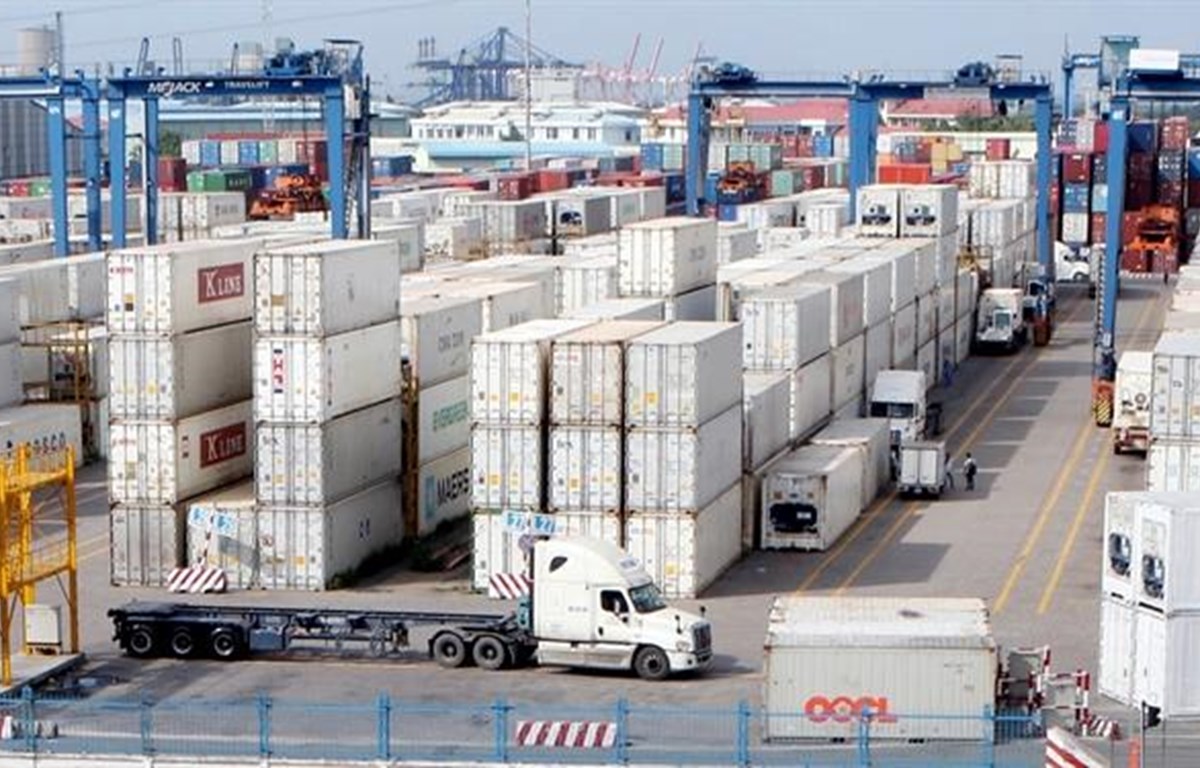Vietnam’s logistics firms remain small despite potential
There are 4,000 Vietnamese businesses operating in the logistics field but most of them are small-scale with weak human resource quality, the Ministry of Industry and Trade (MoIT) reported.

 Containers at Cat Lai port in HCM City’s District 2. (Photo: VNA)
Containers at Cat Lai port in HCM City’s District 2. (Photo: VNA)Hanoi (VNS/VNA) - There are 4,000 Vietnamese businesses operating in the logistics field but most of them are small-scale with weak human resource quality, the Ministry of Industry and Trade (MoIT) reported.
According to the report, Vietnamese logistics enterprises are mainly operating on a small scale, with up to 90 percent of enterprises having capital of less than 10 billion VND (432,500 USD) (lower than the average registered capital of the enterprises), 1 percent of firms have capital of over 100 billion VND, 1 percent have capital from 50 billion VND to 100 billion VND, 3 percent have capital of 20 VND to 50 billion VND, and 5 percent have capital of 10 VND to 20 billion VND.
Up to 2,000 logistics businesses are one-member limited liability companies.
Only 400 businesses have joined the Vietnam Logistics Business Association (VLA).
According to VLA statistics, member enterprises represent over 60 percent of the national market share, including many leading enterprises in the industry. The leading logistics enterprises currently include SNP, Gemadept, Transimex, IndoTrans, TBS Logistics, Sai Gon New Port, Delta, U&I Logistics, Sotrans and Minh Phuong Logistics, which are all members of VLA, providing services to all strategic markets of Vietnam.
The application of information technology in logistics is modest and mainly focused on customs declarations and vehicle monitoring and supervision. However, businesses and logistics centres are making efforts to innovate operations. In addition to the main functions of preserving, labelling, packaging, splitting, handling goods and preparing orders, logistics centres are applying information technology in goods management and tracking, as well as accessing location.
Some specialised logistics centres are almost automated such as logistics centres of Samsung, Unilever, P&G, Vinamilk, and Masan. Major logistics centres are currently concentrated in Hai Phong, Dong Nai and Binh Duong, applying modern management systems of Gemadept, TBS, Sai Gon New Port, Transimex, Mapletree, Damco, DHL, Kerry Express and Viettel Post.
Limited connection
Notably, there are 45 logistics centres in nine provinces and cities of Vietnam, but most of them are second class logistics centres (regional level), and are not yet developed in accordance with the orientation of developing first class centres (national level).
The connection between modes of transport is a major limitation, pushing up logistics costs. This connection is clear on the main transport corridors, with the focus on connecting railways and inland waterways with seaports, urban centres and production centres.
According to Deputy Prime Minister Vuong Dinh Hue, MoIT’s report has helped the Government to make an overview of the current logistics field in Vietnam. These are important data to develop this industry, contributing to promoting trade facilitation in the country as well as exporting goods.
VLA’s data showed that, together with the growth rate of GDP, industrial production value, import and export turnover, retail value of goods and transport services and infrastructure, in recent years, Vietnam's logistics services have a relatively high growth rate of 12-14 percent, the percentage of enterprises outsourcing logistics services is about 60-70 percent, contributing about 4-5 percent of GDP.
With the World Bank's report in 2018, logistics performance index (LPI) of Vietnam is ranked 39 out of 160, up 25 places compared to 2016 and ranked third place in ASEAN countries.-VNS/VNA












